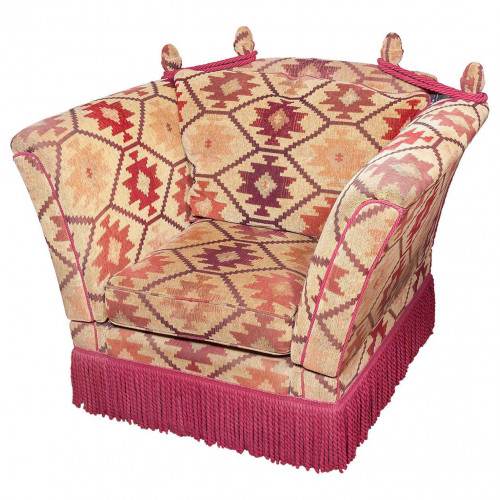A fine, mid-18th century, mahogany re-upholstered wing armchair
10462
The pine, walnut and oak frame in excellent original condition (see photographs). The arched crest, flanked by ogival wings and conical out-scrolled arms centering a bell-shaped, loose-cushioned seat. Re-upholstered in a re-drawn, hand-woven silk damask dyed to match a surviving, green fragment and used in conservation projects at Rangers House, Hampton Court and Marble Hill. The front legs with shell-carving, ending in ball and claw feet. The straight back legs ending in square toes, and with a good rake. Excellent original colour and patina. English, second quarter of the 18th century.
This wing armchair is refined and elegant with great presence. The cabriole front legs are of an excellent proportion and finely carved, with the ball and claw feet giving the armchair stature. The back legs have an excellent rake, creating harmony within the piece. The chair has survived in excellent condition, and the original colour and patina has matured to an excellent quality over time.
Mahogany was first extensively used in chair making about 1725. Relatively few chairs of the mid-18th century can be traced to any pattern book, and the endless variations from the published designs are evidence of the cabinet makers' imagination. Towards the end of the second quarter of the 18th century, French influence again becomes increasingly apparent in the design of English chairs with a lighter and more fanciful fashion in which sinuous lines, subtle curves and delicate carving in low relief usurped the place of baroque solidity. The new styles gradually became naturalised, and traces of foreign influence less noticeable. The height of the back was considerably reduced with the top shaped and cupped to support the neck, the seats become wider and there is a noticeable overall increase in weight and solidity.
18th Century
1750
Mahogany
England










